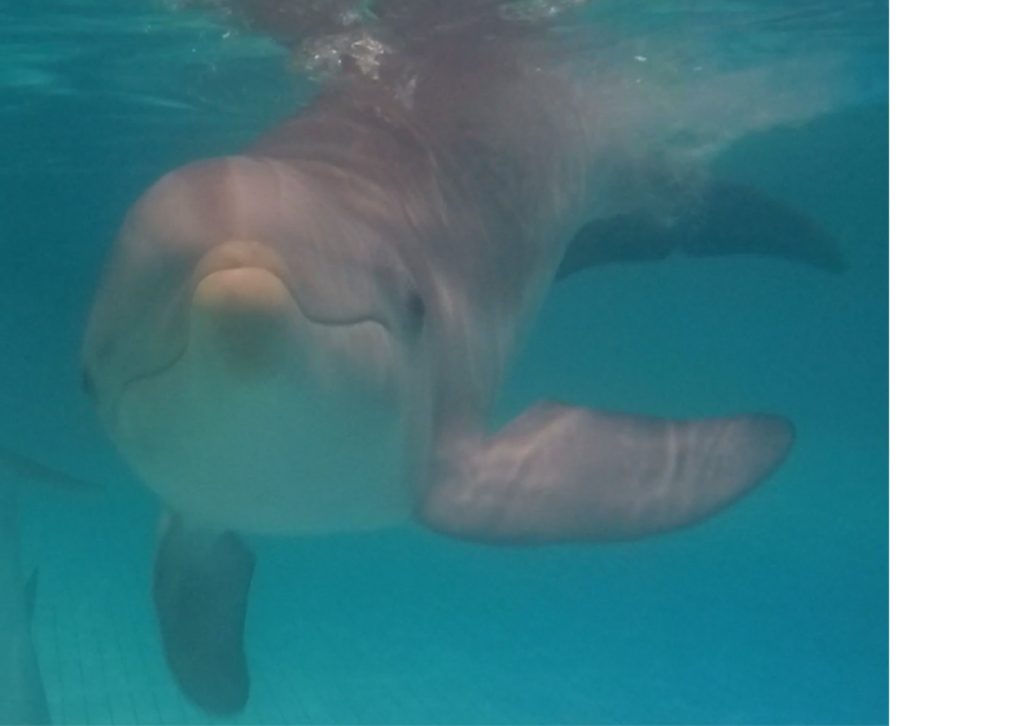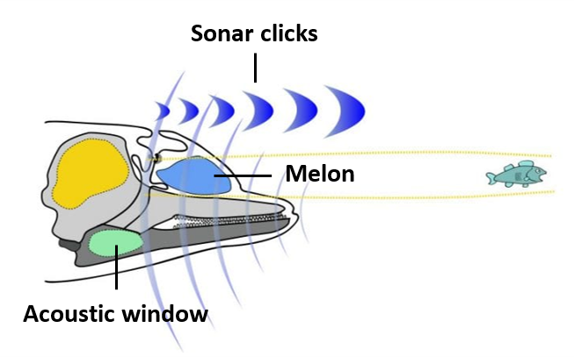Dolphins in Human Care:
For bottlenose dolphins (Tursiops truncatus), one of their most important sensory inputs is related to sonar (echolocation) and species-specific behaviours associated with this. In the wild, bottlenose dolphins use sonar in almost all aspects of their life, such as navigation, foraging, and hunting.
The pools where dolphins are kept are often barren and static environments, with few objects in the water column or in and on the pool floor. The water in the pools also needs to be clear and clean, which means that navigation and exploration in the pool can be based to a high extent on vision. In zoos, most dolphins are fed thawed fish by hand, which eliminates natural foraging and hunting behaviour.
Being able to perform species-specific behaviour is important for animal welfare and is included as a major guideline by both the World Association of Zoos and Aquaria and the European Association of Zoos and Aquaria for good animal welfare.

The Sonar of Dolphins:
Sonar functions due to a dolphins’ specialised auditory system and sound producing mechanism. Their sonar works by emitting trains of broadband, high frequency (40 – 100+ kHz) clicks. These clicks echo back to them if they hit an object and dolphins use these echoes to gather information on potential prey and other objects in the water around them. When echolocating, dolphins will not produce a new click before the previous click is echoed back to them and they have processed it. The time in between producing of the previous and the next click is called the inter-click interval (ICI). When locked on a target, the closer the dolphin gets to a target, the shorter the ICI will become as the click is echoed back quicker and quicker. When the ICI becomes shorter than 10 ms, these fast click trains are called ‘buzzes’. These buzzes are typically observed in connection with foraging and hunting in wild dolphins.

My Project:
For my project, I gave the bottlenose dolphins of Kolmården Zoo special enrichment designed by my supervisor to challenge and stimulate the use of sonar. One enrichment (The Meandering Hose), is a sonar activated hose which moves through the water simulating a prey fish. Gelatine strips and/or fish can be ejected from the hose into the water. The other enrichment (Shell Sand Boxes) is made up of three plastic boxes filled with shell sand, where one box has sonar targets and fish burried in the sand while the others do not. (See Material and Methods for a more detailed explenation)
Aims and expectations:
The Meandering Hose:
Research questions: What are the differences in the use of sonar and frequency of exploratory, foraging- and hunting-like behaviours between the different states of the hose?
Sub questions: How are these parameters affected by the hose being either activate or inactive? How are these parameters affected by gelatine strips and fish being ejected from the hose?
Expectations: The use of sonar and the frequency of exploratory, and foraging- and hunting-like behaviours would increase when the hose is activated compared to inactivated. When gelatine strips and/or fish are ejected, the frequency and duration of these behaviours would increase, where the level of increase would be different between gelatin and/or fish ejections due to individual preferences of the dolphins.
The Shell Sand Boxes:
Research questions: Are dolphins able to detect the buried sonar targets in the sand and to associate this with the presence of fish?
Expectations: If the dolphins are able to detect the air-filled containers by sonar and associate them with the presence of fish, it would be reflected by more dedicated exploration of this box, compared with the other two boxes.